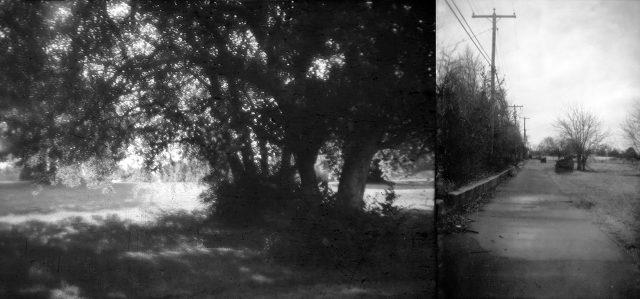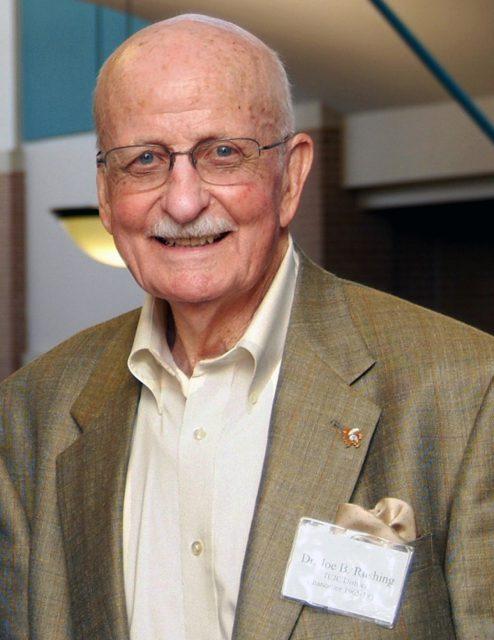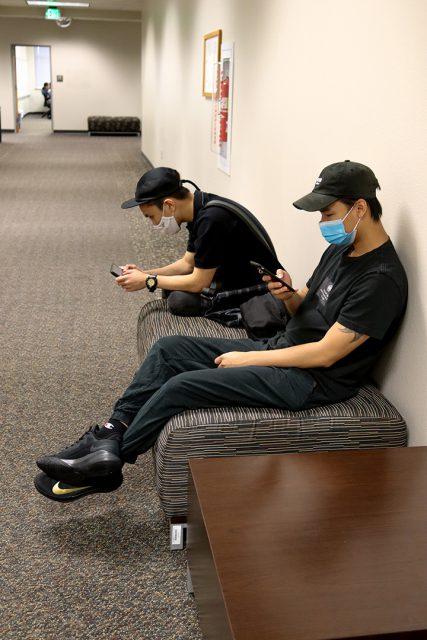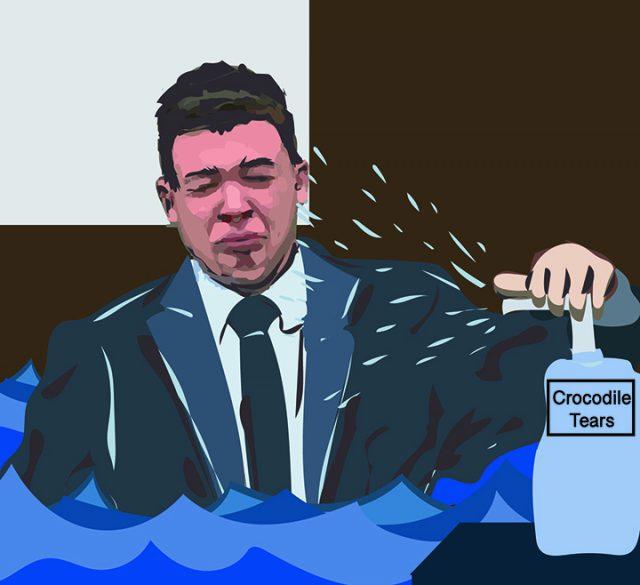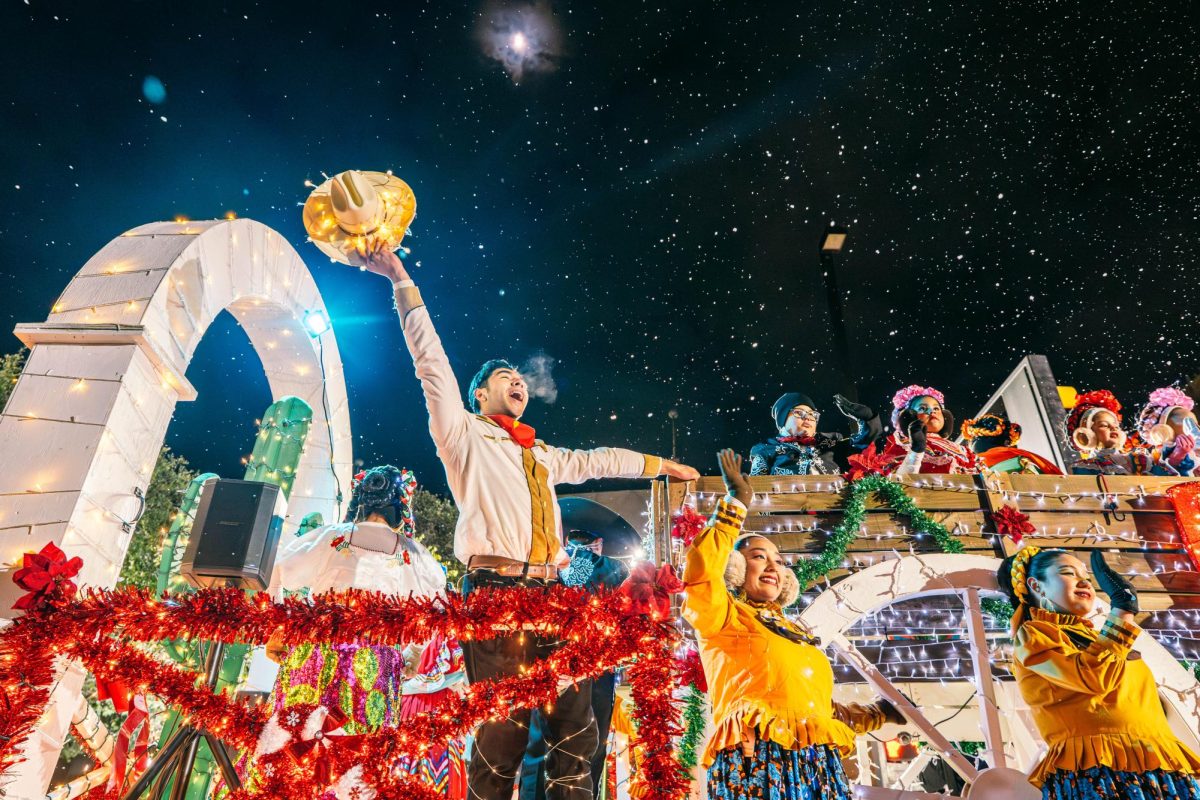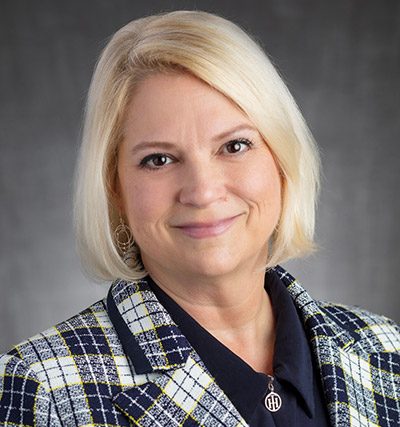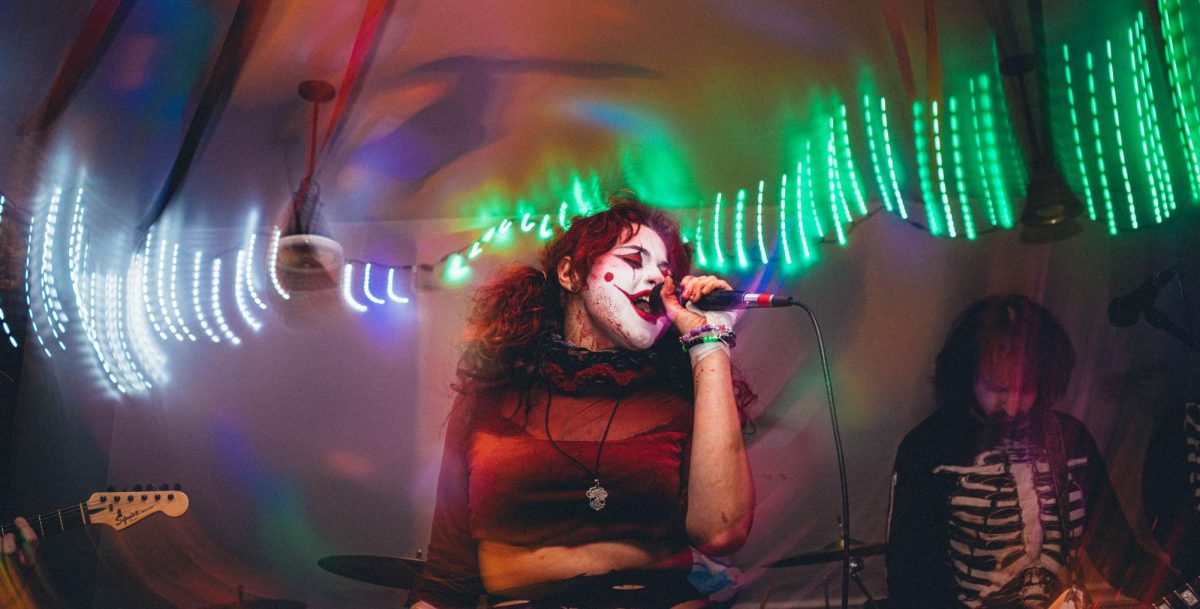Photographer Leah Gose challenges memory, belongings with art
Logan Evans
managing editor
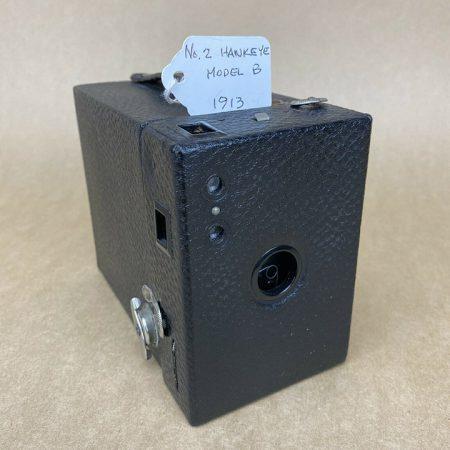
Base images shot in the art exhibit were taken using a 1913 Kodak Hawkeye camera.
Strands of grain scratch the image of an empty poolside shed. Beside it, skeletal branches reach into a monochrome sky. Nothing about the scene indicates a time or a place, but it looks familiar, like it was plucked from deep in the viewer’s memory.
This is Transplantations #1, part of a new exhibit by photographer Leah Gose on display at SE Campus. The series explores personal connection to landscape and the disconnect someone can feel without a strong sense of home.
“I’ve always been fascinated by memory,” Gose said. “Questioning what is real and what isn’t. I spend a lot of time in my head unpacking those questions.”
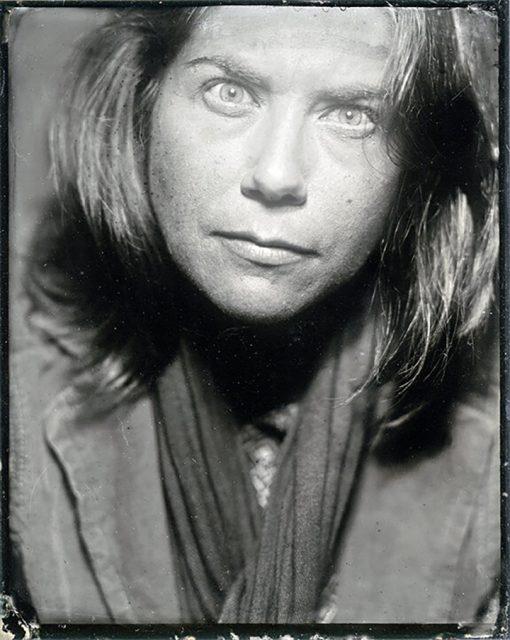
Leah Gose is a visual artist and said the series is meant to evoke perpetual movement.
Transplantations started over ten years ago, when Gose began playing with a 1913 Kodak Hawkeye film camera that was left behind in her graduate studio at Texas Woman’s University. Over time, she accumulated a pool of images using it across Kansas, Texas, Virginia, Michigan and Tennessee. Although the photos span multiple states, years and seasons, Gose found that each conveyed a sense of movement and the feeling of being unable to settle. Gose — who has never lived in the same place longer than 6 years — combined the images to evoke that feeling of separation from one’s environment.
“A lot of the images have fences,” she said. “I’m putting the viewer in the place of being outside, trying to look at something. There’s a sense you can’t get in.”
Gose works with a mixture of analog, alternative and digital photography. She enjoys working with her hands, and finds digital-only work unfulfilling. Nothing in her body of work consists of a single image — many of her pieces come by way of manipulation and collage, never being fixed to one idea.
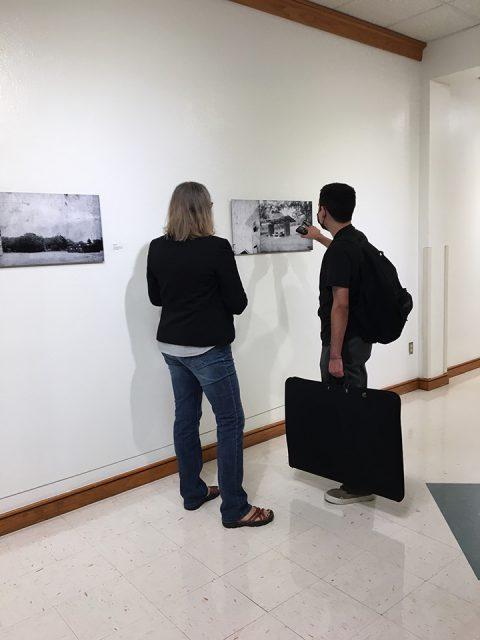
Leah Gose discusses her work with students at the Sept. 10 opening of the Transplantations exhibit.
“I see an image in my head and then I try and go make it,” she said. “It never turns out the way I originally see it, and I’ve learned that is OK. That’s just my intuition.”
Rather than grouping the collage pieces of Transplantation by location or landscape, Gose combined the photos in a way that is purely visual, searching for whichever combination of photos stirred her the most. In the process, she made different variations of each image, printed them, and hung them on her wall to allow their impact to arrive to her over time.
Like Transplantations, much of Gose’s other work deals with memory, nostalgia and perception. Her MFA project Afterlife of Memory is a group of dreamlike collages made with her old family photographs. When Gose was younger, her grandmother suffered from Alzheimer’s, which made a considerable impact on her future art.
“I’ve kind of accepted that I’m always going to be working with these similar themes,” she said. “I’m always going to be pulling at these different threads.”

Transplantations is the first in-person exhibition to be displayed at SE’s art corridor since the campus closed in March 2020. Gallery coordinator Penelope Bisbee, who attended TWU with Gose, said it was the perfect series to return to form with.
“It ended up being so appropriate with having gone through COVID and being at home,” she said.
Bisbee said students have a lot to learn by seeing art displayed in-person. There are textures and nuances that don’t perfectly translate to a screen, she said.
The exhibit opened Sept. 10 with an on-campus artist talk by Gose. During the event, she brought out her film camera and demonstrated how it worked to the audience while explaining her process behind the series and the ideas behind it.
SE art instructor Jungwan Kim attended the event and could relate to the exhibit’s exploration of home.
“I am an immigrant,” Kim said. “Although I lived in my home country longer than I’ve lived here, I feel my current place is my home. I am more comfortable here. Nevertheless, I have a nostalgic image of home from my country. Isn’t it interesting that where I am from is my ‘home’ country?”
In addition to the photography series, the on-installation features a looping short film by Gose featuring a montage of landscapes and scenery matching the tone of the photographs. The exhibit will run through Oct. 8.
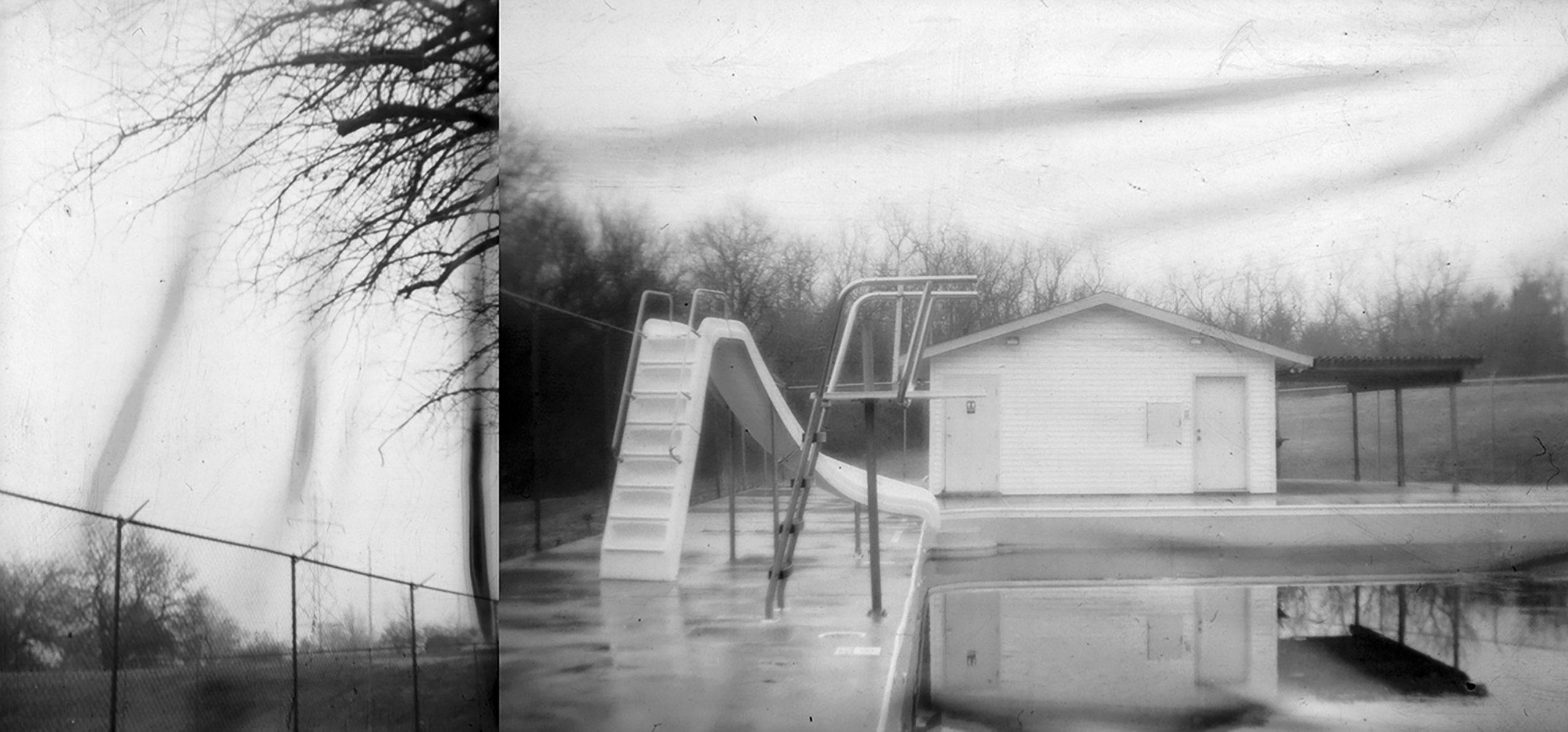
“Transplantations #1” is the first image in the exhibit by photographer Leah Gose on SE Campus.
























